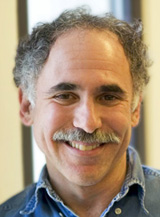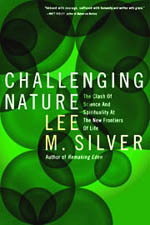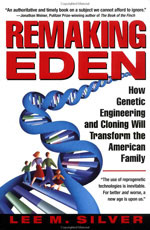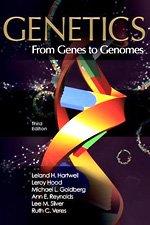|
published by Ecco/Harper Collins, 2006
|
|
Books
Presentations
Publications/Writings
Biography
Princeton Courses
|
Life 2.0
A new generation of scientific mavericks is not content to merely tinker with life's genetic code. They want to rewrite it from scratch.
By Lee Silver
Newsweek International
The people who are defying Nature's monopoly on creation are a loose collection of engineers, computer scientists, physicists and chemists who look at life quite differently than traditional biologists do. Harvard professor George Church wants "to do for biology what Intel does for electronics"—namely, making biological parts that can be assembled into organisms, which in turn can perform any imaginable biological activity. Jay Keasling at UC Berkeley received $42 million from Bill Gates to create living microfactories that manufacture a powerful antimalaria agent. And then there's Craig Venter, the legendary biotech entrepreneur who made his name by decoding the human genome for a tenth of the predicted cost and in a tenth of the predicted time. Venter has put tens of millions of dollars of his own money into Synthetic Genomics, a start-up, to make artificial organisms that convert sunlight into biofuel, with minimal environmental impact and zero net release of greenhouse gases. These organisms, he says, will "replace the petrochemical industry, most food, clean energy and bioremediation."
The notion of creating life in the lab has plenty of detractors. Some scientists aren't convinced it can be done, and religious leaders and environmentalists have expressed their dismay at the idea of tinkering with life (even if it's artificial). Despite the opposition, the researchers who work in the field, which is known as Synthetic Biology, have a disarming casualness about their work—almost as though they were building machines, rather than living things. Indeed, the guiding principle of the field is a conceptualization of living cells as complex computing machines that have the capacity to replicate themselves. The computing analogy for what goes on inside living cells isn't new. Ever since James Watson and Francis Crick discovered the DNA double helix in 1953, molecular biologists have found it useful to imagine genes as software controlling hardware (the cell itself). But SynBio practitioners take the comparison to a new level: they are creating new hardware and software where none existed. SynBio is "oriented to the intentional design, modeling, construction, debugging and testing of artificial living systems," says Tom Knight, a professor at MIT's Artificial Intelligence Lab who now focuses his engineering on microbes. "The genetic code is 3.6 billion years old. It's time for a rewrite."
Such a rewrite is now feasible because the original code—contained within the genomes of naturally evolved organisms (which SynBio practitioners call Life 1.0)—is being deciphered at an accelerating rate. This doesn't mean that we understand everything there is to know about living organisms. But SynBio engineers think they can take what we know and design and construct novel forms of life that are programmed to do practical things that couldn't otherwise be done. "We can now regard cells as 'programmable matter'," says Ron Weiss, a Princeton computer scientist who now writes genetic software for cells. Weiss is convinced that he will soon be able to "program cell behaviors as easily as we program computers."
In the past, genetic wizardry has been confined to tinkering and tweaking what nature has already produced—taking a gene from a bacterium, say, and inserting it into the chromosomes of corn or pigs. What we're talking about is producing life that is wholly new—not in any way a genetic descendant of the primordial Mother Cell. The initial members of each newly created breed will have no ancestors at all.
So far, researchers have fabricated individual biological building blocks, but they have yet to create an entirely new synthetic self-replicating organism. "Chemical synthesis of life has been a standing challenge to synthetic organic chemistry," says Venter (with palpable impatience). But SynBio researchers see no reason to wait until whole organisms can be created from scratch. They are happy to stitch together lab-designed biological components, or "biodevices," with parts of natural cells to construct hybrid organisms. The SynBio enterprise is not some ivory-tower exercise but a pragmatic field that could soon produce results. Church, who at 53 is an elder SynBio guru, thinks it could happen as soon as two years from now if funding is ramped up and scientists don't run into major snags.
Since June 2004, when MIT hosted the first international Synthetic Biology conference, researchers have designed and fabricated thousands of programmable biodevices—bits of genetic machinery that can be brought together to carry out more-sophisticated tasks. Biodevices could conceivably have enormous advantages over traditional manufacturing processes and sources of material. Cell machinery could operate the equivalent of multistep production lines at the molecular level, fabricating complex chemical products precisely, atom by atom. They would also work cheaply and efficiently, fed by simple safe substances like sugar. And once a biodevice is designed and properly fabricated, the hard work is over—its users can instruct it to make as many copies of itself, by itself, as are needed. Biodevices could churn out any imaginable pharmaceutical drug, including ones that are impossible to produce by traditional chemistry, or are prohibitively expensive today. Similarly, they could create any other kind of chemical or polymer for the production of plastics, real wool or silk—at a fraction of today's costs—or other structural and functional materials that have yet to be conceived. Other biodevices could act as sensitive environmental biosensors, programmed to detect and degrade specific toxic organisms, such as anthrax, or to glow in the proximity of a biological, chemical or radiological weapon.
A few projects are already giving us a glimpse of the power of this new field. The most extraordinary effort is to create a microbial organism that would produce a powerful antimalarial drug. In the past, the quinine class of drugs had been effective in treating malaria, but resistant parasite strains have been gaining ground. Artemisinin, a product of the sweet wormwood tree, is a highly effective treatment for people with quinine-resistant malaria, but it cannot be produced in large quantities. In 2004, Keasling, the Berkeley chemical engineer, persuaded the Bill and Melinda Gates Foundation to give him $42 million for the project.
Keasling began with common baker's yeast. Evolution has "programmed" the yeast—by bestowing it with certain genes—to process sugar (its food) along a step-by-step metabolic pathway that results in the various biochemicals required for life. Into this already functioning organism, he added a lab-designed genetic software program made up of 12 new genes. The genetic program diverts a portion of the yeast's metabolism down to a completely new biochemical pathway that results in the chemical synthesis of artemisinin. In April 2006, Keasling announced that he was just one step away from the final compound, and on target to reach the finish line before 2009. Once he's done that, some sugar and a bit of yeast in a fermentation tank could be a cheap and efficient source of enough artemisinin to treat all the malaria cases in the world. Says Keasling: "We're building the modern chemical factories of the future."
Christopher Voigt, of UC San Francisco, and Christina Smolke, of Caltech, are in the early stages of designing microbes that would circulate through the human bloodstream, seeking out cancerous tumors anywhere in the body. The microbes might be equipped with a biodevice that detects the low oxygen levels characteristic of a tumor, another that invades the cancer cells, a third that generates a toxin to kill the cells and a fourth that hangs around afterward in case the cancer comes back. All this would happen without the patient's even knowing. Eventually, circulating cellular sentries could monitor and adjust blood levels of critical substances including glucose and cholesterol.
Venter and Church are eyeing an even bigger prize: a self-sustaining, highly efficient biological organism that converts sunlight directly into clean biofuel, with minimal environmental impact and zero net release of greenhouse gases. What would an ideal biofuel-generation system look like? "The most sustainable source of energy is sunlight and the most convenient products are pipeline-compatible petrochemicals," says Church. "So I would aim for a perennial plant system that secreted pure chemicals—octane, diesel, monomer for plastics, etc.—into pipes without need for further purification."
As long as researchers depend on the genomes of existing organisms to begin building new ones, progress will be hindered to a certain extent. The reason: evolved DNA is a mess of overlapping segments and junk that has no purpose scientists can fathom—and there's no user manual. When genetic engineers go in and tinker with these confusing genomes, they often can't be sure of the outcome of their work. "Screw it," MIT SynBio scientist Drew Endy told Wired magazine. "Let's build new biological systems; systems that are easier to understand because we made them that way."
As a first step, Endy chose to design and construct a synthetic bacterial virus modeled after a natural one named T7, which was already well understood. Unlike T7, the synthetic virus (christened T7.1) was stripped of unnecessary complexity in both design and function—it was reorganized to be sleek and efficient with 57 separate genes encoded in a 40,000-letter-long genome. And although its code was just a distant, unnatural facsimile of nature's creation, T7.1 still behaves like a virus, infecting and reproducing inside bacterial cells.
Viruses and biodevices can't reproduce on their own—they need to hijack a cell. What SynBio scientists are aching to get their hands on is a trimmed-down and simplified version of a whole cell, containing only genes required to power self-maintenance and replication. Every reduction in complexity is likely to yield a biological system that is easier to understand and manipulate, as well as one that has more surplus energy available to devote to making or doing something useful. Based on detailed analysis, Church believes that a genome designed with just 151 specific genes laid out along 113,000 letters of DNA will be sufficient to produce a cell that can reproduce by itself. He reckons he's 80 percent of the way to creating it.
Not all scientists agree that SynBio will work. (A minority that holds strong religious beliefs voices the greatest skepticism.) Francis Collins, the director of the American portion of the Human Genome Project, is a bitter opponent of Venter's free-wheeling approach to biotechnology (the two men were forced to accept equal credit for completing the human-genome sequence on the White House lawn with Bill Clinton). "I find it very hard to believe that, starting from scratch, we can somehow come up with a better [biological] system—one that's going to have much success," he said in an interview with Nova. Leon Kass, former chairman of President George W. Bush's Council on Bioethics, thinks SynBio will fail at a more basic level. Scientists, he says, are "inherently incapable of understanding life as lived—not only by human beings, but by any living thing."
Like most biologists, SynBio practitioners have a more materialist view of life. "Life is not magic," says Princeton's Ron Weiss, an electrical engineer who now concentrates on genetic programming of cells. He thinks older biologists like Kass have not kept up with advances in science. Of course, SynBio scientists haven't quite proven that a cell is a kind of biochemical machine, and religious biologists like Kass and Collins hang on tightly to this uncertainty. Proof will come when the first discrete, self-maintaining, self-replicating, stable organic creature—Life 2.0—is created from scratch in the lab.
Proof won't deter criticism from outside the scientific community. The idea that only God can create life is arguably even more fundamental to Judeo-Christian dogma than the 17th-century notion that Earth was at the center of the universe. Pope Benedict XVI has expressed outrage at scientists who "modify the very grammar of life as planned and willed by God." The pope elaborated in an address in 2006: "To take God's place, without being God, is insane arrogance, a risky and dangerous venture." Green activists echo this disdain. "Synthetic biology is like genetic engineering on steroids," warns Greenpeace representative Doreen Stabinsky.
Behind much of the resistance to the notion of synthetic life is the intuition that nature (or God) created the best of possible worlds. Charles Darwin believed that the myriad designs of nature's creations are perfectly honed to do whatever they are meant to do—be it animals that see, hear, sing, swim or fly, or plants that feed on the sun's rays, exuding bright floral colors to attract pollinators. SynBio proponents are taking a new tack, and they're not afraid of the implications. As James Watson, co-discoverer of DNA structure, says: "If we don't play God, who will?"
Silver is professor of molecular biology at Princeton University. He is the author of "Challenging Nature." He has no financial ties with any biotech firm.
© 2007 Newsweek, Inc.
|
Hover over or click on books to order from Amazon.com
|
|||||||



